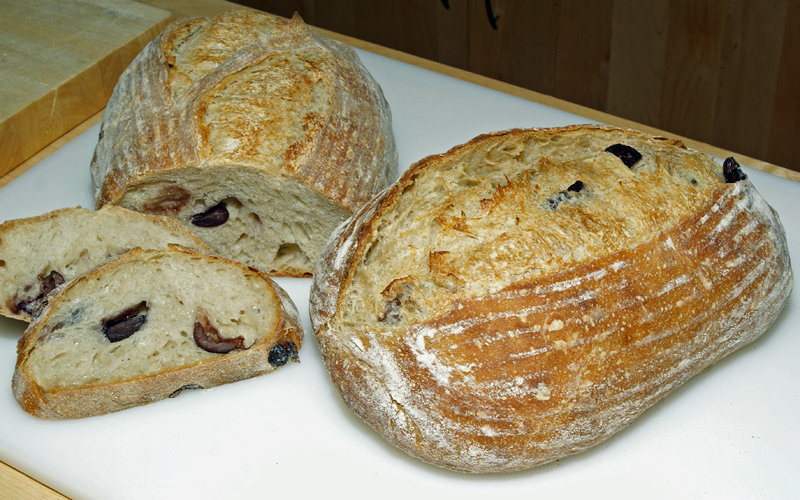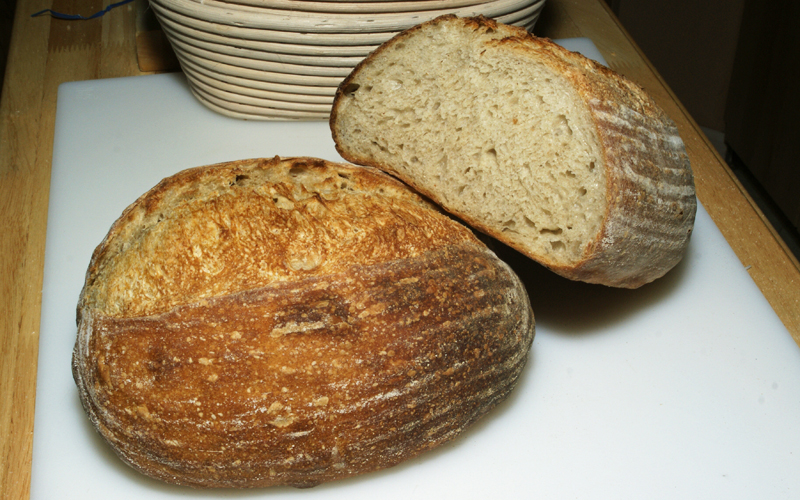davidg618's blog
A photograph can't come close
Back home from my trip to the Grand Canyon. First bake since return (sourdough, of course) is preshaped and resting, coming to room temperature. I promised photos; here is one of the four-hundred I took. At best, a photograph, no matter how good, only triggers the sense memory of awe I felt when I first looked at the Canyon from Mather's Point.

David G
Bread, Bucket Lists and starter maintenance
Tomorrow morning, at the ungodly hour of 4AM, I'm heading off to catch an airplane, the first leg of a trip to Sedona, the Grand Canyon, Lake Powell, Monument Valley, and Bryce and Zion National Parks. My wife, who suffers from acrophobia, is staying home. My friend of 48 years--we met as Ensigns on a USN destroyer in 1963--is joining me in Phoenix. Two years ago, sharing our Bucket Lists, we discovered neither of us have seen Grand Canyon. We'll be away nine days.
Olive Sourdough
I haven't made an olive loaf in more than a year; I'd forgotten how delicious olive sourdough is. I checked in both Bread, randMaggie Glezer's Artisan Baking, but found the dough formulae nearly identical to what I bake routinely, so this is just my usual sourdough: 10% Rye and 90% White flours at 68% hydration, with Kalamata olives, halved and pitted. Some of them were as big as walnuts.

David G
This week's sourdough
Currently, I'm only baking three bread formulae (our daily breads), baguettes, and two sourdoughs: 50% each WW and Bread flours , and a mostly-white flour (equal amounts AP and Bread flours and 10% Whole Rye). I alternate the sourdough bakes week-to-week; and, for the two most recent bakes, I've retarded the fermenting dough for 17 hours @ 54°F. I'm doing this to extract maximum flavors.
This is the first mostly-white version with my new starter.(67% Hydration)

Baguettes, and the K.I.S.S. principle
My wife and I have differing opinions about sourdough--I like it tangy, she likes it mild; sandwich bread--I like its crumb chewy, she likes it soft and fluffy; and biscotti--I prefer parmesan cheese, and black pepper, she craves ameretto-almond. But when it comes to baguettes we are 100% in accord: wheaty flavor, lightly chewy, open crumb, crackling crust. And in that order.
New Starter results
These are #'s 4 and 5. I've made three earlier loaves, all successful, with similar oven spring. I've been experimenting with retarding sourdoughs. I'm so pleased with my Overnight Baguette's flavor and crumb--straight dough, retarded 15 hours @ 54°F--that I've reasoned retarding sourdough loaves should add sparkle to already good flavor. Using my old starter, the results were mixed. I realized excellent flavors, but the doughs were slack, and their oven spring weak.
Slop Bucket Sourdough
Some of you will remember the tale of the miner who froze to death in the Yukon, with the last BTU in his body, curled about Maude, he saved her. Maude was his sourdough starter, named after a favorite memory. I never told you his name. It's Hurcules; friends called him Herk. As his legend grew, he became known as Sourdough Herk, Maude's savior.
What to do when your seed starter dies
Bake bread.
Debra Wink, God bless her, is helping me recover from the loss of my seed starter. In the meantime, because we're out of sourdough loaves--the freezer, at this moment, only holds two baguettes, and some hamburger size soft baps--I've baked my favorite sourdough 10/45/45 Rye/Bread Flour/AP Flour, 68% Hydration converted to a 12 hour sponge, with commercial yeast prefermenting 20% of the formula's flour. I'm not giving up on sourdough, but I have to say, "This bread is tasty!"
